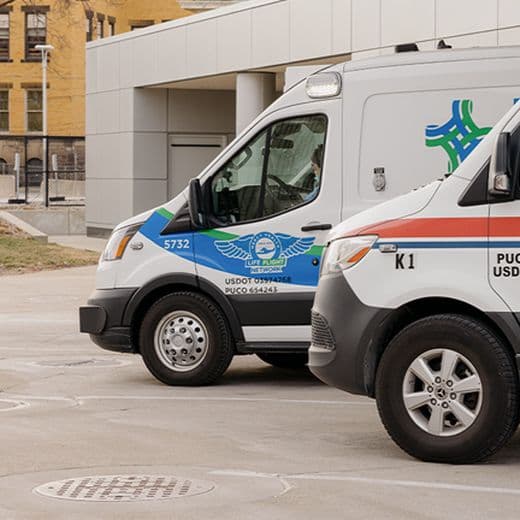If the shortage of skilled healthcare workers — which include physicians, nurses, and allied health professionals — were not already apparent to those outside these professions, then the current pandemic has thrusted the issue into mainstream consciousness.
There is no magic bullet to solve America’s healthcare talent crisis overnight.
But it is crucial to recognize how the rapid evolution and adoption of technology, the demands for a more diverse workforce, and COVID-19 all contribute and lend nuance to this monumental challenge.
A turbulent time in healthcare
Healthcare has been undergoing significant disruption for some time.
Prior to 2020, health organizations were already making significant investments in digital technology and virtual care, racing to meet consumer demands with new care models that in turn required new staffing and skill sets.
Technological advances enabled health consumers to engage with their health and wellness in ways we couldn’t have imagined even five years earlier.
Recognizing the opportunity in the industry, non-traditional health and wellness organizations (i.e. Walmart, Amazon) entered this space to serve the enduring need for health and wellness care, services, and products.
COVID-19 further disrupted so much of what was already rapidly evolving, underscoring and accelerating both the need for digital technology and talent to manage such systems.
As the pandemic continues and other diseases inevitably arise in the future, applications of big data, like contract tracing, risk assessment, and AI forecasting, will come into greater focus, according to the Harvard Business Review.
Computation and those who work in big data will “fundamentally redesign the way essential services are delivered and preserve the functions of society.”
COVID-19 also dramatically sped up the adoption of virtual care and telehealth.
During the last week of March 2020, the CDC reported that telehealth visits had already increased by 154% compared to the same time in 2019.
FAIR Health, a not-for-profit organization that studies healthcare costs and health insurance information, estimates telehealth usage increased by 2,938% from November 2019 to November 2020.
In its various forms, virtual health supports outpatient care, preventive care, and long-term care, as well as mental health services.
“By 2040, a major portion of care, prevention, and well-being services will shift to virtual settings,” an April 2020 study by Deloitte concluded and that “industry-wide investments in virtual health would be significantly higher (more than 25%) over the next decade than today.”
At the same time, the industry is also reckoning with its own inequities both in access and employment. Persistent, systemic racial discrimination resulted in higher COVID-19 hospitalizations and death rates among communities of color, according to the CDC.
Together with the protests against racial injustice in the spring of 2020, the woeful disparity in the quality and service of healthcare and opportunities for healthcare workers between communities has taken hold in public discourse. It is also now a top priority for the Biden administration.
“COVID unmasked how serious many of these issues are,” said Xavier Becerra, President Biden’s nominee for Secretary of Health and Human Services, in an interview with The Los Angeles Times.
“The camouflage that may have hidden some of these disparities has been ripped away.… There is no excuse not to take them on.”
"COVID unmasked how serious many of these issues are. The camouflage that may have hidden some of these disparities has been ripped away.… There is no excuse not to take them on."
President Joe Biden's Nominee for Secretary of Health and Human Services
The talent crisis in our midst
As these concerns come to a head in the industry, the demand for skilled healthcare workers, allied health professionals, and roles in data science and analytics (DSA) to support digital transformation are growing rapidly.
Six out of the 10 fastest growing jobs in the country are in the healthcare industry, as reported by the Bureau of Labor Statistics.
By 2030, the Health Resources and Services Administration projects a dramatic increase in demand for allied health workers.
A recent survey shows that as many as 3 out of 5 nurses are likely to leave their position or specialty as a result of their experience with the COVID-19 pandemic.
In a 2017 report by IBM, the number of data and analytics positions in the US was projected to increase by 364,000 openings to over 2.7 million in 2020 and “job openings for data scientists and similar advanced analytical roles will reach 61,799.”
Given that COVID-19 has only since highlighted the vital role of data and analytics in healthcare, expect these projections to be even higher.
In 2017, a report by the management consulting firm Korn Ferry listed R&D, information technology, and engineering as three of the top five most difficult roles to fill when recruiting. Hiring for R&D talent is particularly competitive, “because high technology brands, in general, are more attractive to prospective employees.”
In this uphill battle for talent, it is also vital “that the healthcare system take measures to improve cultural competence, as well as racial and ethnic diversity,” read a May 2019 study by the American Society of Plastic Surgeons.
Recruiting minority groups, including people of color and women, will help improve healthcare disparities and outcomes for minority populations.
What we're doing and what must be done
Though there are opportunities for education and professional development in healthcare, the industry still faces a number of challenges.
Community colleges, for example, currently play a major role in educating workers in these roles, but there is a need to produce even more allied health graduates to meet the demand for talent in this space.
Once landing a job as an allied health worker, this population often lacks clear career pathways and supports like flexible scheduling, financial assistance, and personal coaching, which can further improve learning outcomes and economic mobility.
Allied health programs have also been impacted by the pandemic, as the hands-on learning components have shifted to accommodate new ways to demonstrate proficiency, and will likely have a lasting impact on applied learning.
Creating talent pipelines through the use of education and skilling current workers would help mitigate the talent gap seen in both allied health and DSA. In the coming months, Guild will continue to break down these and other solutions including:
Reimagining how employers design education benefit programs
Leaning into a digital workforce and the subsequent talent implications
Elevating frontline workers to promote diversity, equity, and inclusion with the hopes to shed more light on solving for the talent challenges in healthcare.



